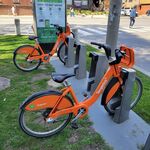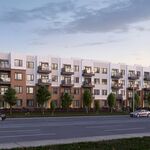Interesting point. If you look at Brampton, there are lots of greenspaces following the most inconsequential of tributaries of creeks and river in the newer sections. It's good for flood managment downstream and watercourse pollution, but these aren't great parklands and serve to spread out the otherwise dense post-1990 sprawl. One hundred years ago, these little watercourses would have been buried and built upon. Fifty-forty years ago, they would have been channelled into narrow corridors. Now they are built around with wide berths. Stormwater management ponds are also good for flood managment and surface water pollution control, but create lots of dead space.








